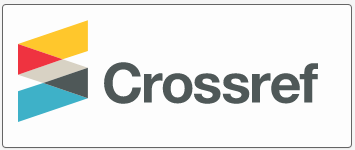Emotional-Expressive Lexis in Addressing and in Georgian Speech Etiquette
DOI:
https://doi.org/10.52340/idw.2023.27Keywords:
Georgian Language, Speech Etiquette, Address, Emotional-Expressive LexisAbstract
Address terms within the familiar, close friendly relations are the unavoidable part of the speech; such phrases are determined by the existing interrelations and by the expressive nature of the dialogue itself. The examples of using emotional-expressive lexis during non-official communications are discussed in the represented paper, basing on the extracts from the dialogues found in the several pieces of literature; these cases are interesting and important from the viewpoint of the Georgian dialogue language and its peculiarities. Special attention is paid to the examples found in the conversations in which the attitude of the speaker towards the addressee and their emotions are shown through simple but stylistically expressive addressing phrases. Those phrases can show the emotions especially due to using the certain grammatical and lexical means of the language and they represent grammatical-lexical means which bear stylistic colorings.
From the point of view of constructions, we can show out the addressing phrases containing one, two or even more components. In the one-word addressing phrases the diminutive or affectionate forms of anthroponyms, expressive emotional adjectives and the like are used in the function of noun; zoological names are used as metaphors; in the extended appealing the lexical units are marked according their emotional coloring but their right interpretation depends on the right understanding of the communication situation. In order to get the correct meaning, it is absolutely necessary to consider the duality of such phrases or otherwise the positive or negative coloring of the sayings may not coincide with positive (caressing, praising, respect, good wishes) and negative meanings of the sayings (such as threatening, mocking, vulgar speech). The addressing phrases containing expressive lexis showing the above mentioned colorings are considered to be rating, assessing within the familiar communicative situations.
The main conclusions are made through the research work basing on the methods of the descriptive, comparative, and semantical-stylistic analysis.
Downloads
References
აფრიდონიძე შ. (2023). მიმართვის ფორმები ახალ ქართულში: სტრუქტურა და ფუნქციონირება. თბილისი: ილიას სახელმწიფო უნივერსიტეტის გამომცემლობა.
გელდიაშვილი ნ. (2022). დადებითი და უარყოფითი ემოციური ველის შექმნის შესაძლებლობები მხატვრული ტექსტის (XX საუკუნის ქართული მცირე პროზის ნიმუშების მიხედვით). სამეცნიერო შრომების კრებული No. 1(35). იაკობ გოგებაშვილის სახელობის თელავის სახელმწიფო უნივერსიტეტი. თბილისი: გამომცემლობა „პრინტჯეო“, 48-58. DOI: https://doi.org/10.52340/tuw.2022.01.35
Dickey, Eleanor (1997). Forms of address and terms of reference: J. Linguistics 33. Cambridge University Press.
Dunkling, Leslie (1990): A Dictionary of Epithets and Terms of Address. London/New York: Routledge. Finck von Finck
ზექალაშვილი, რ. (2012). ქართული დიალოგური მეტყველება (ძირითადი ლინგვისტური და ექსტრალინგვისტური მახასიათებლები). თბილისი: გამომცემლობა „უნივერსალი“.
ზექალაშვილი, რ. რ. (2017). შეფასებითი მიმართვა, როგორც საკომუნიკაციო რეგისტრის სპეციფიკური მარკერი. IV საერთაშორისო სამეცნიერო კონფერენცია „ენა და კულტურა“, შრომები. ქუთაისი, 123-128.
კვარაცხელია, გ. (1990). ქართული ენის ფუნქციური სტილისტიკა. თბილისი: თბილისის უნივერსიტეტის გამომცემლობა.
კვაჭაძე, ლ. (2010). თანამედროვე ქართული ენის სინტაქსი, მე-5 შევსებული გამოცემა. თბილისი. გამომცემლობა „ცოტნე“.
ლევიძე, მ. (2017). კომუნიკაციის ეთნოსტილი და მიმართვის საალერსო ფორმები ქართულსა და ინგლისურ ენებში. ფილოლოგიის დოქტორის აკადემიური ხარისხის მოსაპოვებლად წარმოდგენილი დისერტაცია (ხელნაწერი). თბილისი. ილიას სახელმწიფო უნივერსიტეტი. http://eprints.iliauni.edu.ge/6602/1/%E1%83%9B%E1%83%90%E1%83%A0%E1%83%98%E1%83%9C%E1%83%94%20%E1%83%9A%E1%83%94%E1%83%95%E1%83%98%E1%83%AB%E1%83%94.pdf (25.06.2023).
ЛЭС (1990). Лингвистический энциклопедический словарь (под ред. В. Н. Ярцевой). Москва: «Советская Энциклопедия».
ლოლაძე, ნ. (2008). ემოციების გამოხატვის ენობრივი სურათი. ჟურნ.„სემიოტიკა“, 2008, No.3:122-126.
ომიაძე, ს. (2009). ქართული დისკურსის კულტუროლოგიური პარადიგმა (რედ. გ. კვარაცხელია). თბილისი.
სანიკიძე, თ., სანიკიძე, ი. (2009). ქართული ენის პრაქტიკული სტილისტიკა. თბილისი: გამომცემლობა „ინტელექტი“.
სანიკიძე, ი. (2010). სიტყვის ესთეტიკური და ემოციურ-ექსპრესიული ფუნქციებისათვის ქართულში. I საერთაშორისო კონფერენცია „ენა და კულტურა“, შრომები No.1. ქუთაისი, 349-352.
Spillner, Bernd (2014). Anrede und Grußformen im Deutschen: Czasopismo Stowarzyszenia Germanistów Polskich (Zeitschrift des Verbandes der polnischer Germanisten), 3: 173–187. doi:10.4467/23534893ZG.14.010.2932
ქეეკ – ქართული ენის ეროვნული კორპუსი: http://gnc.gov.ge/gnc/simple-query (25.06.2023).
ქევკ – ქართული ენის ვებკორპუსი: http://corpus.leeds.ac.uk/internet.html (25.06.2023).
ქეკ–ილიას უნივერსიტეტის ქართული ენის კორპუსი:http://corpora.iliauni.edu.ge/?q=ka (20.05.2022).







